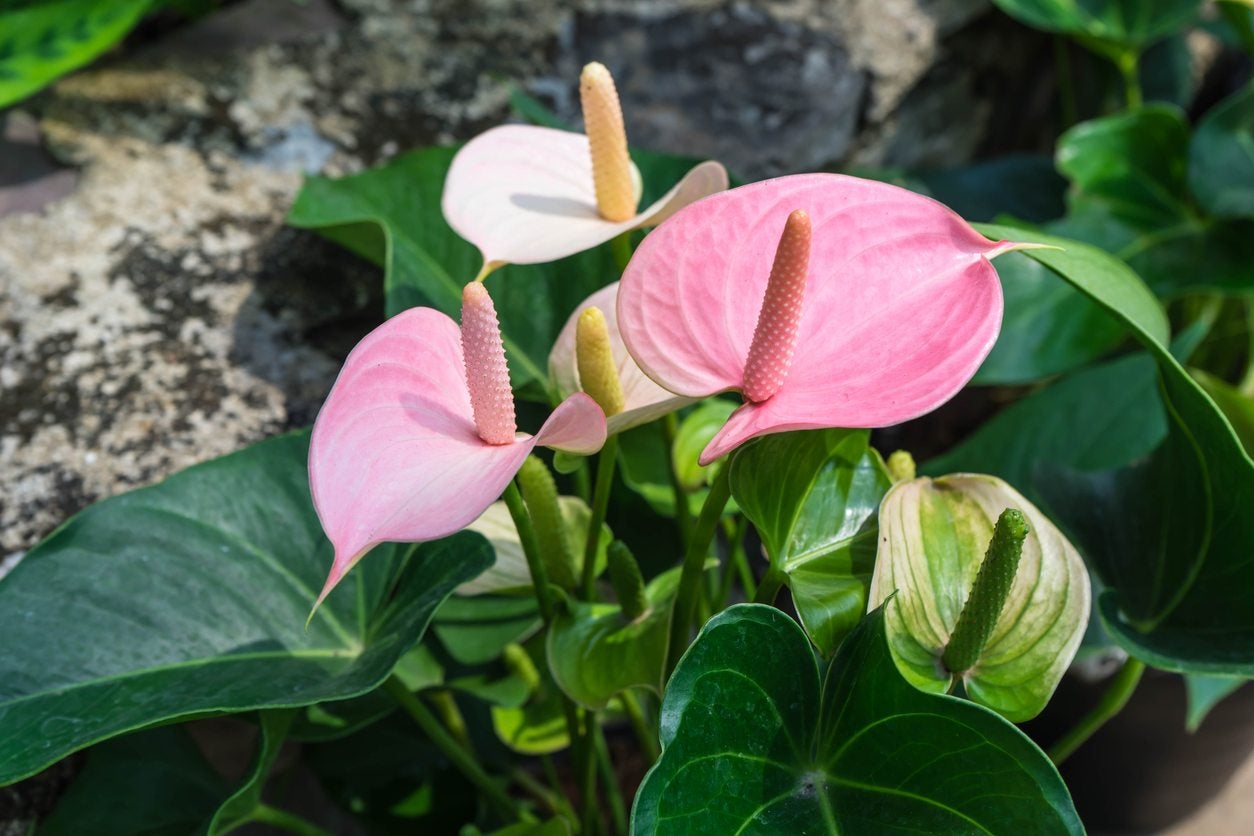Anthurium Outdoor Care – How To Grow Anthuriums In The Garden


Anthuriums have been a popular tropical houseplant for years. They are commonly called spathe flower, flamingo flower, and taliflower because of their colorful spathes, which are actually a protective sort of leaf that surrounds the plant’s spadix. The spathe itself is not a flower at all, but the spadix which grows out of it will at times produce tiny male and female flowers for reproduction. While these true flowers are rarely noticed, its colorful spathe can be found in bright red, pink, purple, orange, and white depending on variety. Native to Central and Southern America, where many species grow on trees in the rain forests, just one anthurium plant can give a room a more tropical feel. Naturally, homeowners are adding this exotic plant to their outdoor rooms as well. However, while anthurium tends to grow well inside, anthurium outdoor care is more difficult.
How to Grow Anthuriums in the Garden
Anthuriums grow very well in controlled environments of the home when given indirect sunlight, consistent temperatures, and regular waterings. Hardy to zones 10 or higher, anthurium is very sensitive to the cold and needs steady temperatures between 60 and 90 degrees F. (15-32 C.) to thrive. When temperatures dip below 60 degrees F. (15 C.), outdoor anthurium plants can be damaged. Anthuriums also require consistent watering and well-draining soil. If they sit for too long in soggy, wet soil, they are prone to root rot, crown rot, and fungal diseases. Anthuriums require part shade or filtered indirect light. Too much sunlight can scorch them, and too little light can cause them not to produce the spathes and spadixes that make them so attractive. In addition, they do not tolerate windy areas outdoors. When growing anthuriums outdoors, it is best to grow them in containers that can be moved inside if temperatures in your area can dip below 60 degrees F. (15 C.). It is also important to water the root zone thoroughly and then let the soil dry out between waterings. This isn't always easy to do in partially shady areas, where soil tends to stay moist and soggy. Amending soil with organic material or mulching around the plant with peat or Spanish moss can help. Never allow soil or mulches to cover anthurium’s plant crown though. Anthuriums should get most of the nutrients they need from the organic material they are planted in. If you choose to fertilize outdoor anthurium plants, only fertilize once every other month using a fertilizer that is high in phosphorus. Many varieties of anthurium are poisonous or contain oils that can cause skin irritation, so do not plant them in area as that are frequented by children or pets.
Sign up for the Gardening Know How newsletter today and receive a free copy of our e-book "How to Grow Delicious Tomatoes".

Darcy is a former contributor to Gardening Know How. She is a professional landscape designer and gardening writer with experience in plant sales. An avid gardener, Darcy has a passion for sharing practical tips to help others grow.